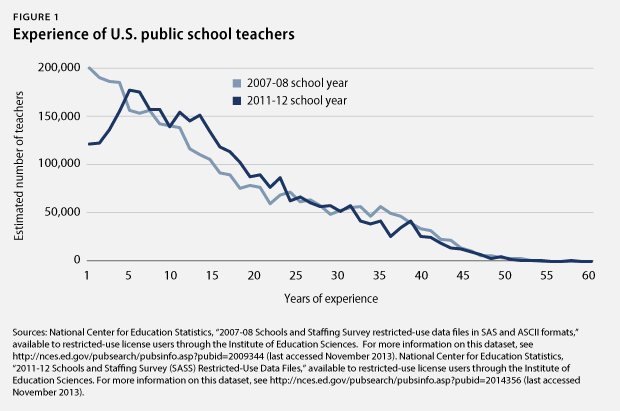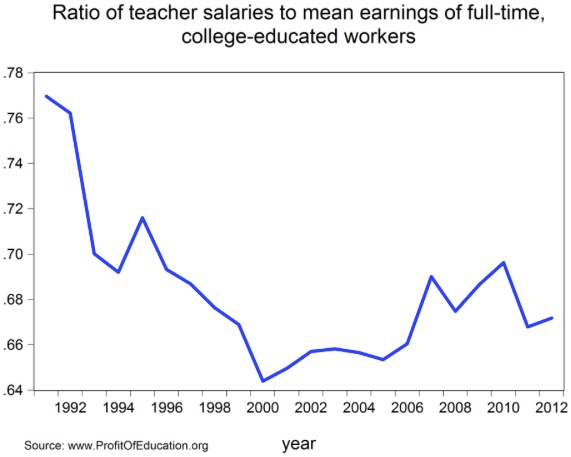Just before the 2007 Great Recession, if you had asked a sample of US teachers how many years of experience they had, the most frequent answer you would get (the modal answer) was "one." Back in 1988, almost two decades earlier, the modal number of years on the job was 15. This tremendous shift in the experience profile of teachers reflected the growing wave of baby boomer teacher retirements as well as the profession's high churn rate.
But as this graph from the Center for American Progress shows, the Great Recession appears to have moved the experience profile of teachers back to the right, increasing the modal number of years of experience to 5. Most of the teachers who entered the profession in 2007-8 appear to have stayed in the classroom four years later. And, as we found from our survey of districts in 2011, many districts responded to budget pressures by not hiring new teachers to replace those who retired or left the profession.

What about pay? Dick Startz, professor of economics at UC Santa Barbara and author of the must-read
Profit of Education blog, ran some numbers recently that shed light on this question:

Startz cautions against making too much of the data from any one year. But it certainly looks as though the ratio rose somewhat during the recession, perhaps reflecting the relatively stronger contractual protections that teachers enjoy against pay cuts. That's not to say that the Great Recession was a picnic for teachers - just that it wasn't as bad for them as it may have been for some others.
On the other hand, when the economy emerges from the doldrums, the trend of the boom years of the late nineties suggests that teachers will fall further behind other BA holders - unless the country takes steps to pay its teachers, particularly effective ones, quite a bit more.
